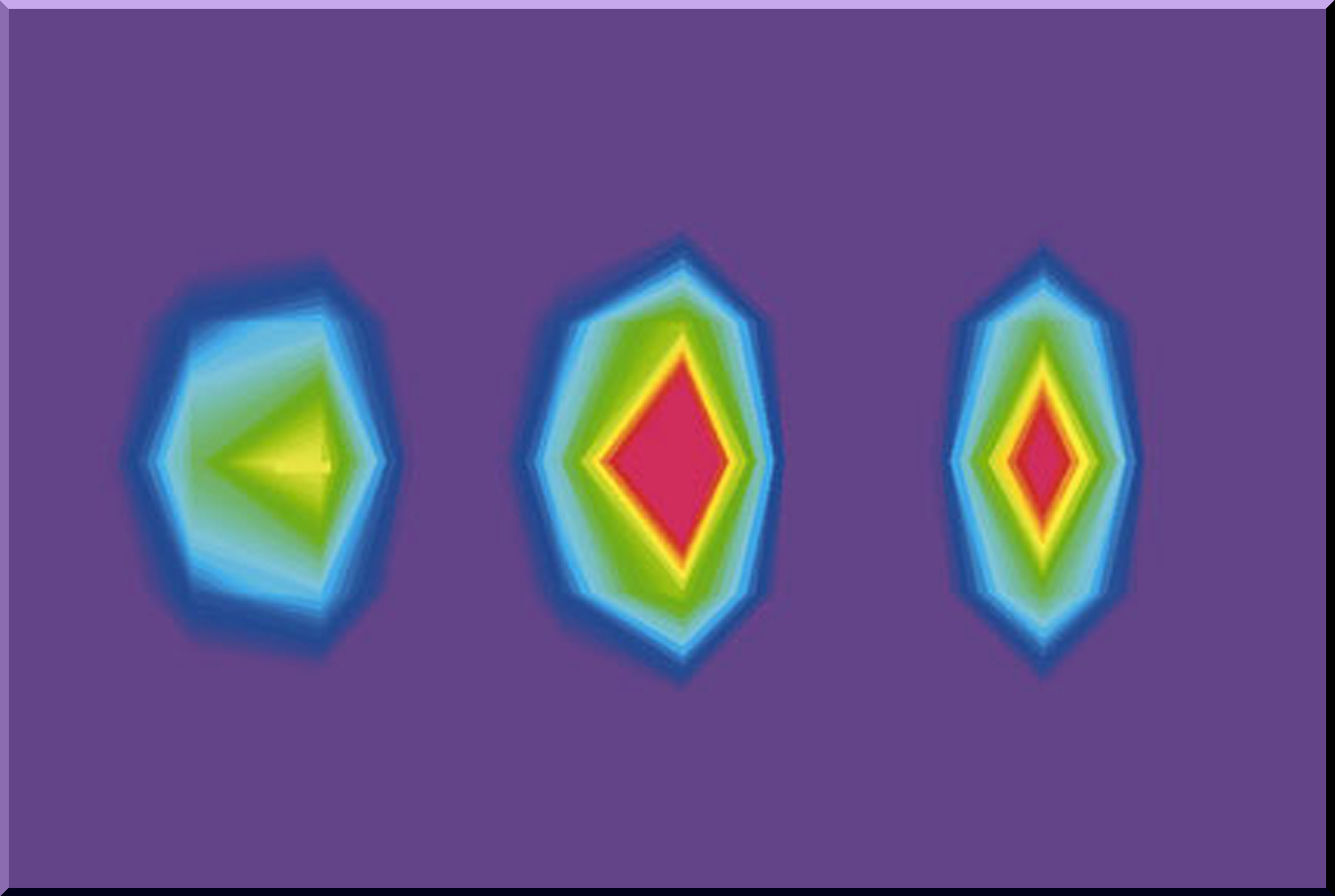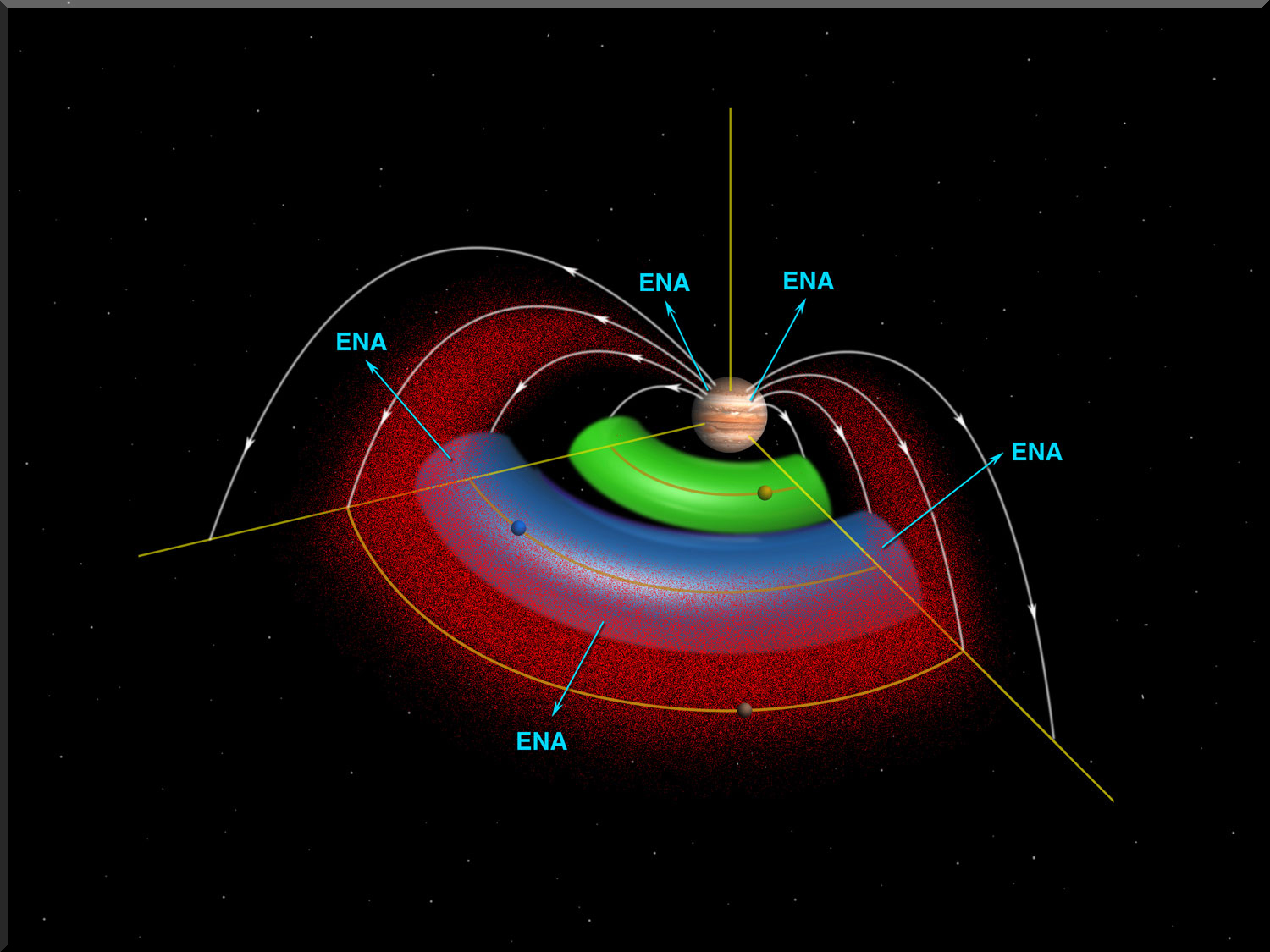Press Release
Johns Hopkins Applied Physics Lab Researchers Discover Massive Gas Cloud Around Jupiter
Thu, 02/27/2003 - 16:38
Using a sensitive new imaging instrument on NASA’s Cassini spacecraft, researchers at The Johns Hopkins University Applied Physics Laboratory (APL) in Laurel, Md., have discovered a large and surprisingly dense gas cloud sharing an orbit with Jupiter’s icy moon Europa.
Stretching millions of miles around Jupiter, the donut-shaped cloud, known as a “torus,” is believed to result from the uncommonly severe bombardment of ion radiation that Jupiter sends toward Europa. That radiation damages Europa’s surface, kicking up and pulling apart water-ice molecules and dispersing them along Europa’s orbit into a neutral-gas torus with a mass of about 60,000 tons.
The cloud’s mass indicates that the intense radiation Europa faces has more severe consequences than scientists thought, says Dr. Barry Mauk, head of the APL research team whose findings appear in the Feb. 27 issue of the journal Nature. The mass also shows that Europa, in an orbit some 416,000 miles (671,000 kilometers) from Jupiter, wields considerable influence on the magnetic configuration around the giant planet.
“Surprisingly, Europa’s gas cloud compares to that generated by the volcanically active satellite Io,” says Mauk. “But where Io’s volcanoes are constantly spewing materials — mostly sulfur and oxygen — Europa is a comparatively quiet moon, and the gas we see is a direct consequence of its icy surface being bombarded so intensely.
“By acting as both a source and a sink of charged radiation particles, the dense gas torus gives Europa much greater influence than was previously thought on the structure of, and energy flow within, Jupiter’s huge space environment, its magnetosphere,” he says.
The Applied Physics Lab team studied images of Jupiter taken in late 2000 and early 2001 with the APL-developed Ion and Neutral Camera on Cassini, now in route to Saturn. Mauk says this is the first substantial discovery made at an extraterrestrial planet using an innovative technique known as energetic neutral atom (ENA) imaging.
“Planetary magnetospheres glow with energetic neutral atoms, much like a red-hot piece of iron glows with photons of light, and such neutral-atom glows can be remotely imaged,” Mauk says. “To this point, no instrument has imaged that activity beyond Earth’s magnetosphere. ENA imaging makes visible the three-dimensional structure of planetary space environments, which, until recently, were invisible to remote imaging techniques.”
Research team members at APL and co-authors on the Nature paper, “Energetic neutral atoms from a trans-Europa gas torus at Jupiter,” include Dr. Donald Mitchell, Dr. Stamatios Krimigis, Dr. Edmond Roelof and Dr. Christopher Paranicas. Krimigis, head of the Space Department at APL, is principal investigator for Cassini’s Magnetospheric Imaging Instrument, which includes the Ion and Neutral Camera.

